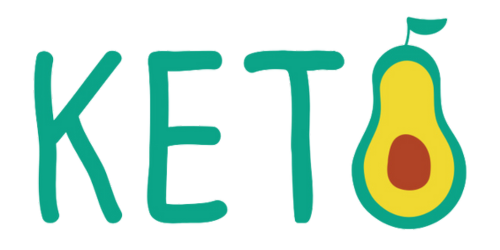The Jenny Craig diet is a weight-loss program that consists of a personal counselor, prepackaged food, and a diet plan.
The program can be completed at home or a Jenny Craig facility. The Jenny Craig diet is used to treat obesity and lose weight.
Origin of Jenny Craig Diet
The program was created in Australia in the mid-1980s but quickly became a household name in the United States.
Consultants assist members in their weight loss journey through supportive and motivational counseling.
How simple is it to stick to the Jenny Craig Diet?

Jenny’s nearly 100 entrees, desserts, and snacks range from “new global flavors” like chicken street tacos to indulgent desserts (chocolate lava cake, anyone?). Despite the small portions, you’ll eat three meals and two snacks daily, and dinner includes dessert. Furthermore, there is no carbohydrate restriction or elimination of entire food groups.
But, for the most part, you’ll be obsessed with Jenny’s prepackaged meals until you’ve lost half the weight you want.
Jenny Craig Meals are quick and simple to prepare
What’s not to like about having meals delivered to your door or picked up at a location? Regarding lifestyle changes, alcohol and caffeine are permitted in moderation, and your consultant will assist you in determining appropriate amounts. The company’s online resources could be beneficial.
desire to fail
You can experiment with recipes
The Jenny Craig community, hosted on the company’s website, provides low-fat recipes and advice from Jenny Craig members.
eating out wont be a hectic
Your Jenny Craig consultant will assist you in organizing social events, vacations, and dining out. To help customers stay on track during the holidays, the company offers “Jenny Craig friendly” menus. Jenny’s “Weight Loss Journey Guide” and “Maintenance Manual” include dining-out strategies and tips.
You’ll save time on meal preparation
Because it emphasizes prepackaged meals, the Jenny Craig diet saves time.
You have the following resources at your disposal
The Jenny Craig community allows members to share tips, and encouragement, whereas the “Healthy Habits” blog offers free information to anyone, including interviews with registered dietitians and nutritionists and healthy cooking techniques.
Fullness should not be an issue
Satiety, or the satisfying feeling that you’ve had enough, is highly valued by nutritionists. On this diet, hunger should not be an issue. Jenny Craig incorporates “Fresh & Free” additions based on the Volumetrics approach developed by Penn State University nutritionist Barbara Rolls, which entails selecting the least “energy-dense foods” to keep you fuller for longer.
Foods low in fat and rich in water, fiber, and protein are the least energy-dense:
Before a meal, for example, you might be down a “Soup Addition” to keep your appetite in check.
It’s a more flavorful packaged meal plan diet
In February 2011, Consumer Reports compared Jenny’s packaged meals to its competitor, Nutrisystem, and concluded that Jenny won. Testers tasted 32 Jenny products, including entrees and snacks, and rated them on the high end of the “good” scale, while Nutrisystem’s meals were on the low end of the “good” ranking. However, both programs’ offerings have been updated since 2011, so you be the judge.
How much exercise should you do on the Jenny Craig Diet?

Plan your activities based on your fitness level and motivation.
The point is to incorporate activity into your daily life rather than embark on a rigorous exercise regimen.
(If you’re already very active, your consultant will review your routine to see if you can do anything to improve it, such as weight training.) You could start by wearing a pedometer or parking further away from the mall.
Biological activities are promoted, such as walking around while watching a baseball game instead of sitting in the bleachers.
Dancing at home, for example, is a fun way to burn calories. Fitness isn’t complicated; it’s part of a healthy, active lifestyle. The goal is gradually to increase to 30 minutes of moderate activity five days a week.
What Foods You Can Eat on jenny craig’s diet
Jenny Craig benefits those who do not have time or prefer not to shop for or prepare food at home. Jenny Craig breakfasts, lunches, dinners, desserts, and snacks are all available on the program. You will also supplement these with fresh fruits, vegetables, and other nutritious foods.
Jenny Craig Pre-Packaged Foods
Most of your food intake will be repackaged breakfasts, lunches, dinners, and snacks, including desserts, bars,
shakes, and more. Jenny Craig also provides condiments, dressings, and soups.
Fruits
Apples
Apricots
Blueberries
Peaches
Pears
Pomegranates
Raspberries
Strawberries
Fresh and Frozen Vegetables
Asparagus
Beets
Brussels sprouts
Celery
Eggplant
Leafy greens
Peas
Tomatoes
Squash
Zucchini
What You Cannot Eat
On the Jenny Craig diet, you cannot eat foods outside the Jenny Craig brand, except fruits and vegetables.
Outside Foods
Restaurant food
Store-bought food other than fresh or frozen fruits and vegetables
Sweets and desserts other than Jenny Craig brand
DIET REVIEW SCORECARD
Overall score: 2.96 out of 5
Weight loss: 4.25 out of 5
Healthy eating: 2 out of 5
Sustainability: 4 out of 5
Whole body health: 2.25 out of 5
Nutrition quality: 2.25 out of 5
Evidence-based: 3 out of 5
Benefits of Jenny Craig Diet
Like any other weight-loss program, the Jenny Craig Diet has advantages and disadvantages. Here are some of the benefits:
1. There is no need for planning or preparation
You don’t need to meal prep or cook because your meals and snacks are delivered to your door, and the amount of food shopping you need to do is minimal. This makes the plan a convenient option for those who are too busy or dislike cooking.
2. It Can Aid in Weight Loss:
According to the Annals of Internal Medicine review, Jenny Craig can help you lose more weight in a year than people who don’t follow a diet — an average of 5% more.
3. You Get Encouragement and Support Along the Way:
Members are assigned consultants to assist them in navigating their weight-loss journey, which can be critical to their success.
Indeed, according to a March 2018 study published in the Journal of Medical Internet Research, people who received one-on-one coaching were more likely to lose weight.
4. It Promotes Physical Activity:
Jenny Craig is marketed as a healthy diet because it encourages physical activity. While working out is not required, the program recommends that members get 30 minutes of exercise five days a week, consistent with the Physical Activity Guidelines for Americans established by the United States Department of Health and Human Services.
Drawbacks of the Jenny Craig Diet:
Food must be reheated
Jenny Craig may not be the most convenient option for everyone. The frozen meal entrées must be reheated in the microwave. The diet may be more challenging to follow if you cannot access these appliances during the day.
Expensive
The Jenny Craig program’s cost is frequently mentioned as a disadvantage. The price may range from $15 to $23 per day, plus shipping, depending on your chosen plan, location, and time of year. A month’s worth of food can range from $550 to $800. In addition to the cost of food, there are program fees.
Processed foods are used
Many prepackaged frozen foods are processed, and some may contain high sodium levels. Furthermore, some meals include unhealthy ingredients like white bread, sugar, or bacon. Some people may not have allergy-safe options, and eating out is not part of the plan when eating only prepackaged meals.
Gluten is present
Jenny Craig is not a good choice for people who have celiac disease or are gluten intolerant. Almost every meal on the plan contains gluten. Due to gluten cross-contamination during processing, the few meals that contain no obvious gluten are not intended for those with celiac disease or non-celiac gluten sensitivity.
It contains the following allergens
Jenny Craig may not be suitable for those allergic to peanuts, soy, or dairy products. While some products may not contain allergens, there is a high risk of cross-contamination.
High sodium content: Jenny Craig’s meals can be high in sodium because they are processed, making it challenging to stay under the recommended daily amount of 2300 milligrams. Maintaining a healthy sodium intake may aid in the prevention of high blood pressure, hypertension, and cardiovascular disease.
Conclusion
You may not need to follow a long-term or short-term diet. Many diets don’t work, especially in the long term.While we’re not advocating dietary trends or unsustainable weight loss methods, we do want to present the facts to help you understand your dietary needs, genetic plan, budget, and goals. You can make informed decisions that are best for you.

